Current Affairs – 17th Feb 2024
Current Affairs – 17th Feb 2024
Income Tax Appellate Tribunal (ITAT)
Recently, the I.T. department froze Congress bank accounts over 2018-19 returns but the appellate tribunal provided partial relief.
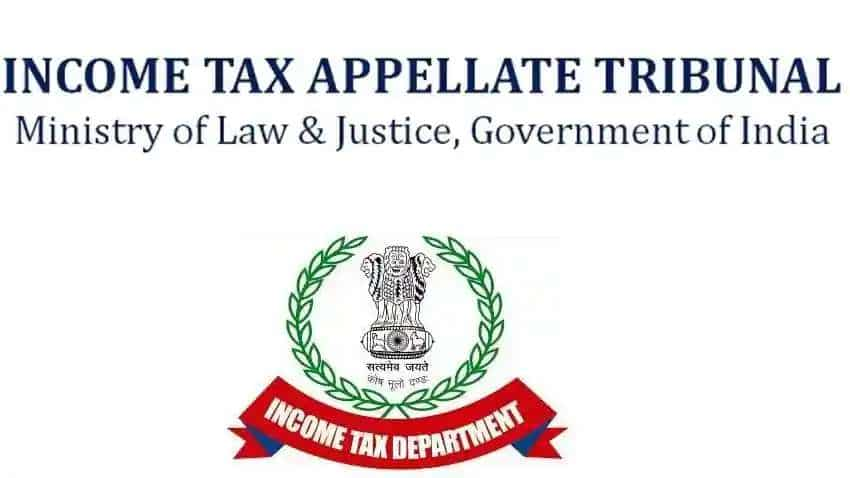
About Income Tax Appellate Tribunal (ITAT):
- ITAT is a quasi-judicial institution set up in January 1941.
- It specialises in dealing with appeals under the Direct Taxes Acts.
- Functions:
- It hears income tax appeals from taxpayers against orders passed by the Income Tax Authorities.
- The orders passed by the ITAT are final, an appeal lies to the High Court only if a substantial question of law arises for determination.
- Benches:
- Presently ITAT has 63 Benches in 27 different states covering almost all the cities having a seat of the High Court.
- Strength: One President, who is assisted by ten (10) Zonal Vice Presidents and 115 Members (i.e. Accountant Members and Judicial Members).
- The ITAT is headed by a President, who is appointed by the Central Government.
- Monetary Limits set by the CBDT are the following:
- Before the ITAT – Rs 50 lakh.
- Before the High Court – Rs 1 crore.
- Before the Supreme Court – Rs 2 crore.
- ITAT is referred to as the ‘Mother Tribunal’ being the oldest tribunal in the country.
APEDA
The Union minister of state for commerce and industry addressed a gathering of farmers and Agri-produce buyers in the ‘Agri-Export: Capacity Building Cum Buyer-Seller Meet’ organised by APEDA in Mirzapur.
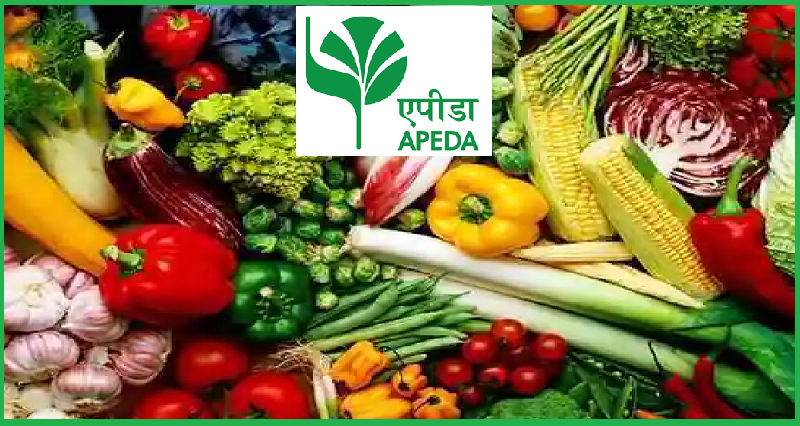
About APEDA:
- The Agricultural and Processed Food Products Export Development Authority (APEDA) was established by the Government of India under the Agricultural and Processed Food Products Export Development Authority Act, 1985.
- This Authority replaced the Processed Food Export Promotion Council (PFEPC).
- The Authority with its headquarters at New Delhi, is headed by a Chairman.
- In order to reach out to the exporters in different parts of the Country, APEDA has set up 15 Regional Offices in different cities like- Mumbai, Bengaluru, Kolkata etc.
- Functions: The following functions have been assigned to the Authority:
- Registration of persons as exporters of the scheduled products on payment of such fees as may be prescribed;
- Fixing of standards and specifications for the scheduled products for the purpose of exports;
- Improving of packaging of the Scheduled products;
- Improving marketing of the Scheduled products outside India;
- Promotion of export-oriented production and development of the Scheduled products;
- Training in various aspects of the industries connected with the scheduled products;
- APEDA also functions as the Secretariat to the National Accreditation Board (NAB) for the implementation of accreditation of the Certification Bodies under the National Programme for Organic Production (NPOP) for Organic exports.
- Ministry: Ministry of Commerce and Trade.
Cash Reserve Ratio (CRR)
The State Bank of India (SBI) has requested the Reserve Bank of India (RBI) for a lower cash reserve ratio (CRR) on green deposits raised from customers.
About Cash Reserve Ratio (CRR):
- Under CRR, commercial banks have to hold a certain minimum amount of deposits as reserves with the RBI.
- The percentage of cash required to be kept in reserves against the bank’s total deposits is called the CRR.
- The RBI decides the amount and is kept with them for financial security.
- The bank cannot use this amount for lending and investment purposes and does not get any interest from the RBI.
- The CRR applies to scheduled commercial banks, while regional rural banks and NBFCs are excluded.
- The following are the critical objectives of the CRR:
- CRR helps control inflation. In a high-inflation environment, the RBI can increase CRR to prevent banks from lending more.
- CRR also ensures banks have a minimum amount of funds readily available to customers, even during huge demand.
- CRR serves as the reference rate for loans. Also known as the base rate for loans, banks cannot offer loans below this rate.
- Since the CRR regulates the money supply, it boosts the economy whenever required by lowering the CRR.
- How is the CRR Calculated?
- There is no CRR formula. In technical terms, CRR is calculated as a percentage of Net Demand and Time Liabilities (NDTL).
- NDTL for banking refers to the aggregate savings account, current account, and fixed deposit balances held by a bank.
- In case a bank fails to maintain its CRR, it will have to pay fines to the RBI because of that default. The fine is charged for the shortfall.
PM-SVANidhi
Recently, the Union Minister of Housing and Urban Affairs Minister disbursed loans to 10,000 beneficiaries of the PM SVANidhi scheme.
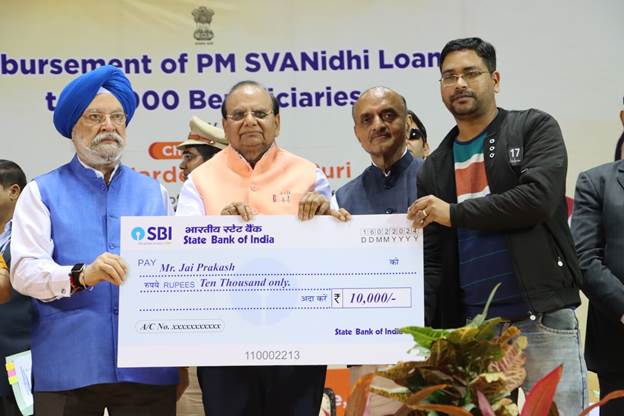
About the PM SVANidhi Scheme:
- The PM Street Vendor’s AtmaNirbhar Nidhi (PM SVANidhi) was launched on June 01, 2020, for providing affordable Working Capital loans to street vendors to resume their livelihoods that have been adversely affected due to the Covid-19 lockdown.
- Time duration: Initially it was until March 2022. After that, it has been extended till December 2024.
- Eligibility: The Scheme is available for beneficiaries belonging to only those States/UTs which have notified Rules and Scheme under the Street Vendors (Protection of Livelihood and Regulation of Street Vending) Act, 2014.
- Benefits: A micro-credit scheme, facilitating a working capital collateral-free loan of Rs. 10,000, with subsequent loans of Rs. 20,000 and 50,000 with 7% interest subsidy.
- Implementation agency: Small Industries Development Bank of India (SIDBI).
- Ministry: Ministry of Housing and Urban Affairs.
INSAT-3DS
According to ISRO, The countdown for the launch of the INSAT-3DS meteorological satellite onboard a Geosynchronous Launch Vehicle has commenced.

About INSAT-3DS:
- INSAT-3DS Satellite is a follow-on mission of Third Generation Meteorological Satellite from Geostationary Orbit.
- Presently, meteorologists make extensive use of data generated by satellites like the INSAT-3D and INSAT-3DR (launched in September 2016, still operational).
- It is fully funded by the Ministry of Earth Sciences (MoES).
- The primary objectives of the mission are:
- To monitor Earth’s surface, carry out Oceanic observations and its environment in various spectral channels of meteorological importance.
- To provide the vertical profile of various meteorological parameters of the Atmosphere.
- To provide the Data Collection and Data Dissemination capabilities from the Data Collection Platforms (DCPs).
- To provide Satellite Aided Search and Rescue services.
- Weight: 2,274 kg.
- Orbit: Geosynchronous Transfer Orbit (GTO).
- It will be launched by using the Geosynchronous Launch Vehicle (GSLV-F14).
What is GSLV-F14?
- It is a more advanced rocket utilising liquid propellant.
- It is a three-stage 51.7 m long launch vehicle having a liftoff mass of 420 tonnes.
- The third stage (GS3) is a cryogenic stage with a 15-ton propellant loading of liquid oxygen (LOX) and liquid hydrogen (LH2).
Schengen Area
Recently, Kosovo secured visa-free access to the Schengen zone in Europe, world’s largest zone of free movement
- Schengen agreement – A treaty, signed in 1985 in Schengen, by France, Germany, Belgium, Luxembourg and Netherlands and came into force in 1995.
Schengen is a village in Luxembourg, bordering France and Germany.
- Aim – To abolish internal border checks and to provide a single set of rules for controls at the external borders in Schengen area.
- Parties – 27 countries
- Membership – It has allowed both EU and non-EU countries.
- Today, 23 of 27 EU countries are parties except Cyprus and Ireland but Bulgaria and Romania to join in March, 2024.
- It includes non-EU States like Iceland, Norway, Switzerland and Liechtenstein.
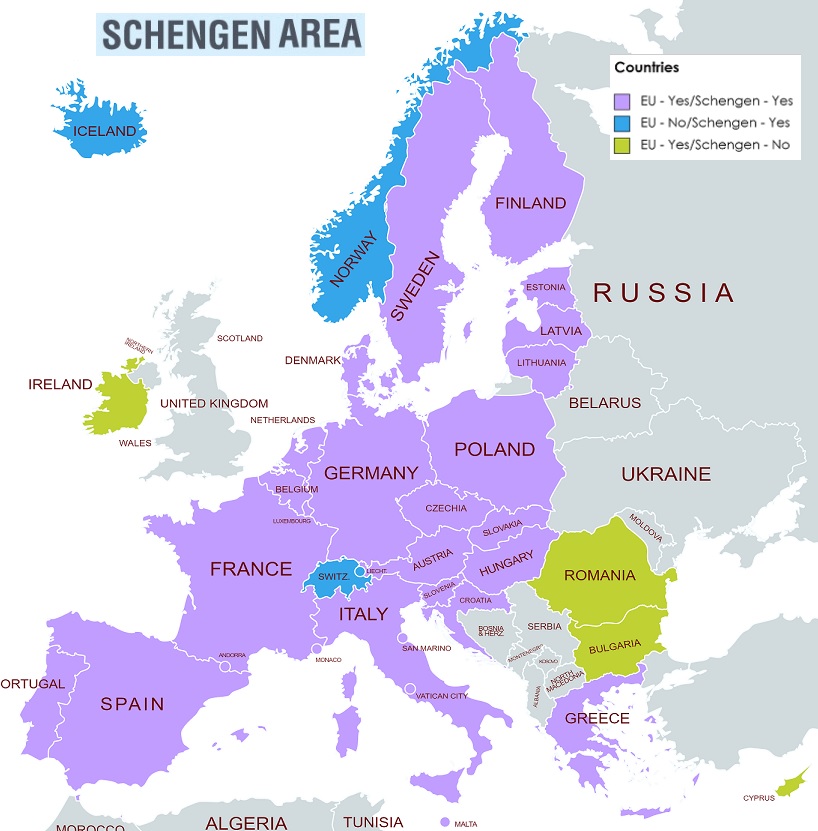
United Kingdom (UK) is a non-EU and non-Schengen Country.
- Schengen Visa – It is issued for short stays under 90 days.
- Benefits – Freedom to travel to other European nations without border checks.
- Alongside the single currency adopted by 20 EU countries, Schengen visa is the most visible symbol of European integration.
- Challenges – The flow of migrants and asylum seekers is seen as a threat to internal security and affected member states uses the Schengen Borders Code to introduce internal border controls.
Quick facts
- Kosovo – A Balkan nation which broke away from Serbia in 1999 and declared independence in 2008.
- It has not been accorded legal statehood by the UN and denied recognition by Russia and China.
- Balkan countries – Albania, Bosnia and Herzegovina, Kosovo, Montenegro, North Macedonia and Serbia.
National Commission for Scheduled Castes (NCSC)
Recently, Vice-Chairman (Chairman in-charge) of the NCSC submitted its annual report 2022-23 to the President of India.
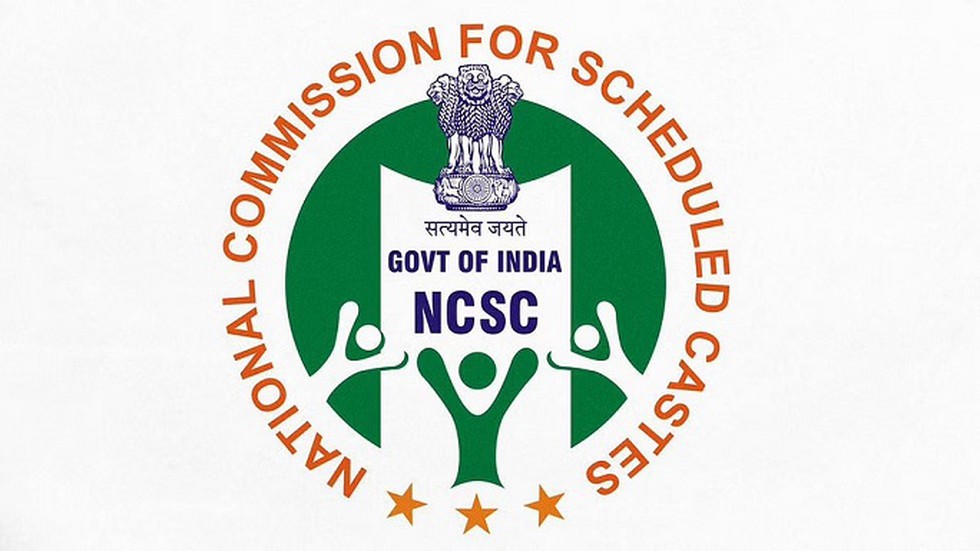
- It is a constitutional body under Article 338 of the Constitution of India.
- Aim – To provide safeguards against the exploitation of SCs and Anglo Indian communities and to promote & protect their social, educational, economic and cultural interests.
- Composition (5) – Chairperson, Vice-Chairperson and 3 other Members.
- Appointed by – President, by warrant under his hand and seal.
- President may by rule determine the conditions of service and tenure of office of all the members.
89th Constitutional Amendment Act (2003), separated the erstwhile National Commission for Scheduled Castes and Scheduled Tribes into 2 separate commissions – National Commission for SC and National Commission for ST (NCST).
- Powers and Function – It shall have the power to regulate its own procedure.
- To investigate and monitor all matters relating to all safeguards provided for the SCs and to evaluate their working.
- To inquire into specific complaints with respect to the deprivation of rights and safeguards of the SCs.
- It has all the powers of a civil court like summoning attendance, requiring documents, receiving evidences, requisition public copy from court or office and examining the witnesses.
- To advise on the planning process of socio-economic development and to evaluate the progress under the Union and any State.
- To discharge such other functions as the President may, subject to the provisions of any law made by Parliament, by the rule specify.
- The Union and every State Government shall consult the Commission on all major policy matters affecting SCs.
- Report – Presented to the President, annually and at such other times as the Commission may deem fit where it recommends measures that should be taken by the Union or any State.
National Commission for Scheduled Tribes (NCST) under Article 338(A) and National Commission for Backward Classes (NCBC) under Article 338 (B) are constitutional bodies for the protection and development of STs and BCs of India respectively.
India’s open-sourced DPIs
India and Colombia signed a Memorandum of Understanding (MoU) on Cooperation to share India’s open-sourced DPIs.

- India Stack Solutions – It is India’s open-sourced DPI, a democratic and inclusive set of open Application Programming Interface (APIs) that stack upon each other to address various social challenges arising from economic underdevelopment.
- Digital public infrastructure (DPI) – It is a set of shared digital utilities powered by interoperable open standards providing equal access to drive innovation, inclusion, and competition at scale having open, transparent, and participatory governance.
Open source software (OSS) is software with a source code that that anyone can inspect, modify, and enhance with its original rights.
- Digital public goods (DPGs) – A set of digital assets made freely available allowing anyone to build and operate their own DPIs in a faster, cheaper, and interoperable manner.
- India’s DPI framework
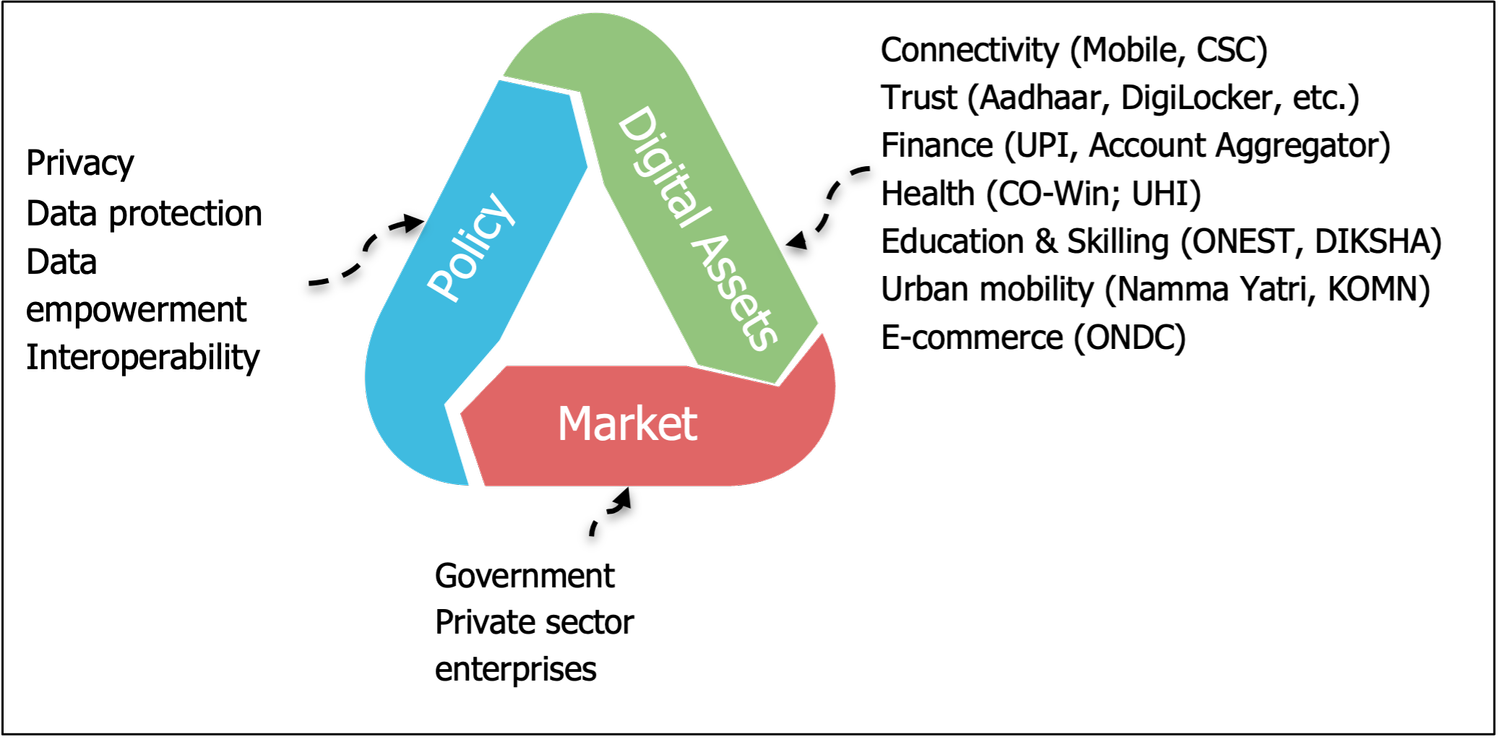
- Significance – DPI approach can reduce implementation cost thereby increasing society-wide impact of digitalisation.
- It can make India genuinely a leader of the Global South, as is evident from the fact that 8 countries have already signed MoU for the stack.
India has launched Global DPI Repository (GDPIR), a virtual repository of DPI voluntarily shared by G20 members and beyond. Currently, the GDPIR features 54 DPIs from 16 countries.
Operations of Railway Protection Force
The Railway Protection Force (RPF) undertake various operations to safeguard railway property, passenger areas, and the well-being of travellers.

- Railway Protection Forces – It is established through RPF Act, 1957 and was amended in 1985 to make RPF an Armed Force.
- Aim – To ensure a safe and comfortable travel experience for all rail passengers and thereby upholding the values of integrity, compassion, and responsibility.
| Operation | Objective | Significance |
| Nanhe Faristey |
Rescuing Lost Children | Reuniting the children in need of care and protection with their families. |
| Jeevan Raksha |
Saving Lives | Saving the lives of passengers who had accidentally fallen while de-boarding or boarding moving trains. |
| Meri Saheli |
Empowering Women Passengers | Providing security assurance to lady passengers. |
| Uplabdh | Cracking Down on Touts | Arresting touts and Seizing future reserved railway tickets. |
| NARCOS | Combating Drug Crimes | Arresting drug peddlers and seizing narcotics. |
| Yatri Suraksha |
Protecting Passengers | Supplementing police in preventing and detecting crimes against passengers. |
| Sanraksha | Ensuring Safety | Maintaining passenger safety from perilious acts of stone pelting on running trains. |
| Seva | Assisting Those in Need | Assisting elderly, sick or injured passengers during their rail travels. |
| Satark | Curbing Illegal Goods Transport | Seizing illegal tobacco products, illegal liquor and unaccounted cash, gold and silver. |
In addition to this, RPF promptly addressed security-related passenger complaints through Rail Madad Portal and the Helpline (No. 139 integrated with Emergency Response Support System No. 112).
Anti-Dumping Duty
India has initiated an anti-dumping probe into imports of certain solar glass from China and Vietnam, following a complaint by domestic players.

About Anti-Dumping Duty:
- Anti-dumping duty is a tariff imposed on imports manufactured in foreign countries that are priced below the fair market value of similar goods in the domestic market.
- The government imposes anti-dumping duty on foreign imports when it believes that the goods are being “dumped” – through low pricing – in the domestic market.
- Anti-dumping duty is imposed to protect local businesses and markets from unfair competition by foreign imports.
- Thus, the purpose of anti-dumping duty is to rectify the trade distortive effect of dumping and re-establish fair trade.
- The use of anti-dumping measures as an instrument of fair competition is permitted by the World Trade Organization (WTO).
- The WTO allows the government of the affected country to take legal action against the dumping country as long as there is evidence of genuine material injury to industries in the domestic market.
- The government must show that dumping took place, the extent of the dumping in terms of costs, and the injury or threat to cause injury to the domestic market.
- While the intention of anti-dumping duties is to protect local businesses and markets, these tariffs can also lead to higher prices for domestic consumers.
What is Countervailing duty (CVD)?
- It is a specific form of duty that the government imposes to protect domestic producers by countering the negative impact of import subsidies.
- CVD is thus an import tax by the importing country on imported products.
- Why is CVD imposed?
- Foreign governments sometimes provide subsidies to their producers to make their products cheaper and boost their demand in other countries.
- To avoid flooding the market in the importing country with these goods, the government of the importing country imposes CVD, charging a specific amount on the import of such goods.
- The duty nullifies and eliminates the price advantage enjoyed by an imported product.
- The WTO permits the imposition of CVD by its member countries.
Countervailing duty v/s Anti-dumping duty:
- Anti-dumping duty is imposed to prevent low-priced foreign goods from damaging the local market. On the other hand, CVD will apply to foreign products that have enjoyed government subsidies, which eventually leads to very low prices.
- While the Anti-dumping duty amount depends on the margin of dumping, the CVD amount will completely depend on the subsidy value of the foreign goods.
New crustacean Species
Researchers at Odisha’s Berhampur University recently found a new crustacean in Odisha’s Chilika lagoon.

About the New Crustacean Species:
- It is a new species of marine amphipod-a shrimp-like crustacea of genus Parhyale.
- This genus is represented by 15 species globally, occupying both marine and brackish water environments.
- Features:
- It is brown in colour and around eight mm in length.
- It has 13 pairs of legs. The first pair of legs is used for capturing prey and feeding.
- It differs from all other 15 species by having a stout robust seta -a spine-like structure on the surface of the propodus of the male gnathopod (first pair of legs).
What are Amphipods?
- Amphipods are any member of the invertebrate order Amphipoda (class Crustacea) inhabiting all parts of the sea, lakes, rivers, sand beaches, caves, and moist (warm) habitats on many tropical islands.
- Amphipods are a significant group in the marine ecosystem and play a vital role in the marine food chain.
- They range in size from a millimetre in length to the supergiant amphipod Alicella gigantea at 340 mm.
- They can be found in all marine habitats (even the deepest ocean trenches, e.g., Hirondellea dubia), and have also colonised freshwater and terrestrial habitats.
- The generic diversity of amphipods is apparently higher in cold waters than in warm ones.
- They are important food for many fish, invertebrates, penguins, shore birds, small cetaceans, and pinnipeds.
- Most amphipods are active swimmers, propelled by three pairs of abdominal appendages.
- They also serve as indicators for studying the impact of climate change and the health of coastal ecosystems.
Interpol’s Red Corner Notice
The Central Bureau of Investigation (CBI) recently said it has brought back an absconding life convict, against whom there was a Red Corner Notice (RCN) in a murder case.

About Interpol’s Red Corner Notice:
- Criminals or suspects often flee a country to evade facing justice.
- A Red Corner Notice, also called a Red Notice (RN), is a request to law enforcement worldwide to locate and provisionally arrest such fugitives.
- It alerts the police forces across the world about these fugitives who are wanted internationally.
- A red notice contains information that helps identify the wanted person, including name, date of birth, nationality, and physical attributes like colour of hair, eyes, etc., along with pictures and biometric information.
- It also includes information about the crimes that they are wanted for.
- Interpol issues an RN at the request of a member country.
- The country which issues the request need not be the home country of the fugitive.
- Interpol acts at the request of the country where the alleged crime is committed.
- An RN request can also be raised by International Criminal courts and Tribunals.
- It is not an international arrest warrant. It is a request to locate and provisionally arrest a person pending extradition, surrender, or similar legal action.
- Interpol cannot compel the law enforcement authorities in any of the countries to arrest someone who has an RN issued. Each member country determines on the legal value it gives to an RN.
Key Facts about Interpol:
- The International Criminal Police Organization (ICPO), commonly known as Interpol, is an intergovernmental organisation that facilitates international police cooperation to control crime.
- It has 195 member countries, with its headquarters in Lyon, France.
- Each of the member countries has an Interpol National Central Bureau (NCB).
- They facilitate the respective country’s national law enforcement with other countries and with the General Secretariat, which is Interpol’s body that coordinates its policing and administrative activities.
- CBI represents Interpol in India as the country’s NCB.’
- Interpol helps coordinate police networks & experts in different crime areas to control crime.
- All the member countries are connected through Interpol’s communication system, called I-24/7.
- This secure network is used by member countries to contact each other and allows them to access Interpol’s databases.
- Interpol manages 19 databases, which include information on varied crimes and criminals and are available in real-time to countries.
- It offers investigative support, including forensic analysis, locating fugitives across the world, etc.
SOFIA (Stratospheric Observatory for Infrared Astronomy)
Scientists recently detected water molecules on the surface of two asteroids for the first time ever, using the data from NASA’s now-retired SOFIA airborne observatory.

About SOFIA (Stratospheric Observatory for Infrared Astronomy):
- SOFIA was a telescope mounted on a Boeing 747 SP aircraft that studied infrared light, essentially heat, emitted by objects in the universe.
- SOFIA was operated jointly by NASA and the German space agency.
- It is the world’s largest airborne astronomical observatory, complementing NASA’s space telescopes as well as major Earth-based telescopes.
- The observatory, fitted with an 8.9-foot-wide (2.7 metre) telescope with a nearly 20-ton mirror, used a door in the side of the aircraft to peer at the sky.
- Flying into the stratosphere at 38,000-45,000 feet put SOFIA above 99 percent of Earth’s infrared-blocking atmosphere, allowing astronomers to study the solar system and beyond in ways that are not possible with ground-based telescopes.
- SOFIA could observe the universe in the widest range of infrared light.
- The aeroplane is capable of ten-hour flights, with flight paths chosen to keep ahead of the sunrise and maximise the amount of darkness.
- The observatory’s mobility allowed researchers to observe from almost anywhere in the world and enabled studies of transient events that often take place over oceans, where there are no telescopes.
- For example, astronomers on SOFIA studied eclipse-like events of Pluto, Saturn’s moon Titan, and Kuiper Belt Object MU69, the next flyby target for NASA’s New Horizons spacecraft, to study the objects’ atmospheres and surroundings.
- The SOFIA project prematurely ended in 2022 after operating for 12 years.
